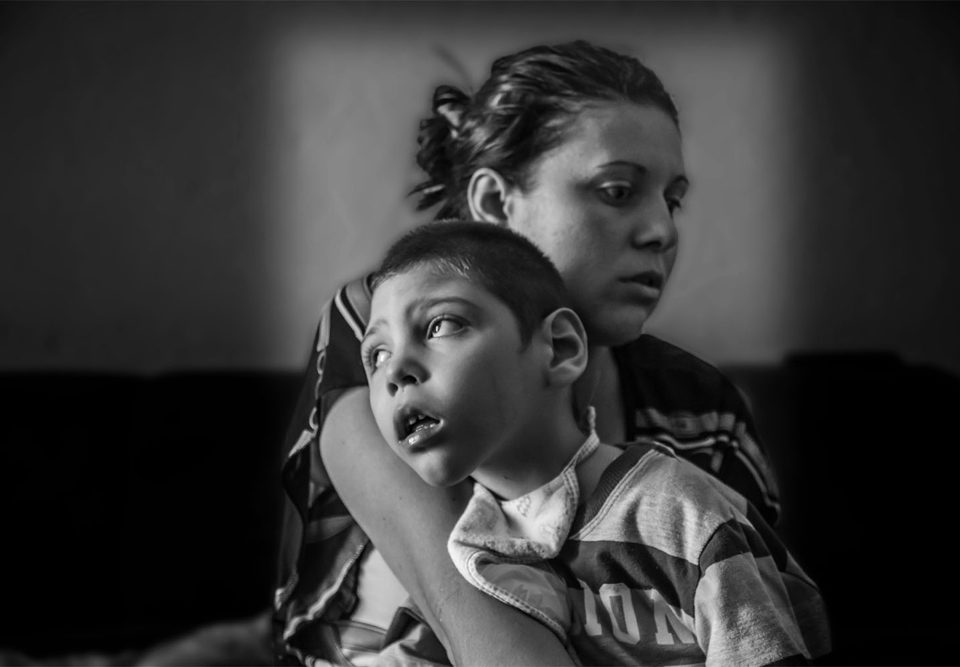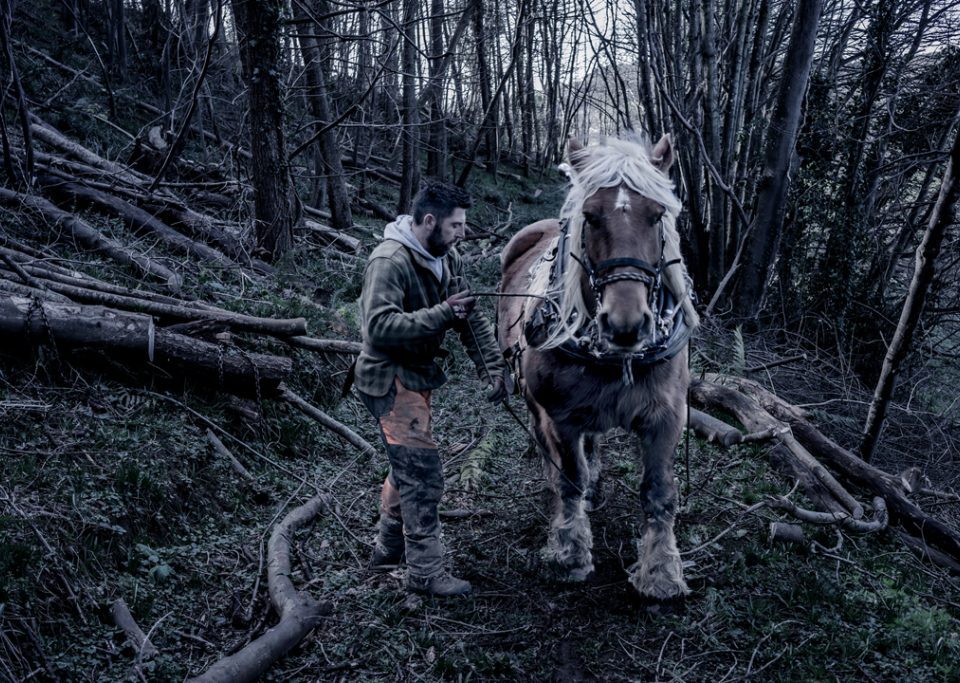EXILE – A MIND IN WINTER
Before I discuss the exhibition
I want to explain some experiences and thoughts which have led to it.
There are two parts to this story.
The first is this:
I was for a number of years a photojournalist.
I saw injustice, unfairness, brutality,
and people driven to despair
through poverty, hopelessness
and the loss of jobs, community and dreams.
Later, while filming a series of documentaries,
I closely witnessed three post-war communities
and also intense poverty in many other parts of the world.
It was then that I began to understand the neoliberal globalization agenda;
and I recognized that silence makes one complicit with these wars and poverty.
Without entering too far into a political discussion,
those things I saw changed me,
and ever since, I’ve tired, within the limits of my abilities
to transform what I witnessed into clear messages:
photographs, films and texts.
I can say this: that while I learned to emotionally protect myself
and to not claim other’s horror and trauma as my own,
and while my attempts to allow rationality to hold
the judgemental intellectual rudder,
I was continually left with heartache.
Creative projects arise from these cells of anguish
and then from curiosity.
Even at my age I continually ask why this and why that?
One of the clearest answers to the enigma
of our species unhappiness and insecurity
is that Democracy and capitalism are two systems
whose motivations are diametrically opposed.
It is this conflict that continually gives rise to alienation
and thence to exile in different forms.
Communality versus anti-social corporate interests;
egalitarianism versus top down authoritarianism;
care and concern versus exploitation of labour;
fairness versus taking every possible advantage
regardless of ethics and morality;
the rule of law-for-all versus the power to overrule the law
and most importantly:
kindness and generosity versus avarice, greed and brutality.
In all of my efforts
I’ve worked on projects that encourage understanding and resistance
to the dominant cultural and political assumptions.
We have allowed the neoliberal political and cultural establishment to convince us
that I am more important than We,
that its best to define ourselves
as consumers – destroyers of things,
than as producers – makers of things,
and they tell us individual psychology is a better way to know who we are
than is our collective history.
It is these things that have led us to an excess of avarice and materialism.
It is these things that have led us allow capitalism, money and markets
to rule our live
as we drown in their electronic trinkets and shallow culture
while the earth floods and burns.
If Karl Jung and other psychoanalysts are right,
our childhood complexes create subservience, dependency and fears
which force us to cling to something that absolves us from our guilt,
shelters us from the powerful forces around us,
and gives some of us hope that there is a better afterlife.
These are the unconscious and unresolved needs of the child within us.
These are the ways in which false consciousness exiles us from ourselves.
To progress, I believe we need to fully accept
that we are, under our skin,
brothers and sister.
This is in part what Exile reflects.
All of the above lead to the second part of the story.
One day a painter friend of mine, Ricky Romain
whose work is largely concerned with human rights,
asked me to come see a new painting of his
composed of 72 frames.
I stood in front of his large canvas,
my eyes darting from frame to frame and back.
I encountered the Bauhaus,
ancient Egyptian and Greek shards of mystery and culture;
there were dark clowns, dancing woman, wraiths and old people lamenting loss;
there were elegant, sinister, murderous old men and a terrified child or two;
there were ancient songs and cries,
there was music and the sounds of late 20th century crowded night-time city streets,
people begging to be allowed to live and others begging to die,
birds of prey and birds of hope winging through frames,
as if all the stories of humanity and all the suffering of humanity
were swarming in constricted places,
as in rail stations on the rail line to the camps,
or in union halls – dingy and forlorn with labourer’s fractured dreams,
and there was alienation, broken promises, isolation and more alienation.
It told me there was a film asking to be freed from this painting.
And this led to the idea of the exhibition, Exile – A Mind In Winter,
a mind frozen in the pain of rejection and the myriad forms of alienation
which ultimately leads to the cruelty of exiling the others,
because they are not like us,
those whose poverty or illness or skin pigment or pathways to their gods
or to the stunning emptiness of atheism offend or threatens us.
Ricky and I worked on the ideas
and asked our wonderful Congolese painter/poet friend,
Cedoux Kadima to join us.
Cedoux, a man who has had his own intense experiences with exile.
Now almost three years later we will have that large painting shown with others.
These paintings are based on an ancient Jewish mythical story about 36 wise men
who must exist as 36 in the world for all of time:
as they balance goodness against evil.
Thus the 72 frames of the painting
as there must always be a backup should one of the 36 falter.
According to the myth
they do not know they’ve been chosen by God? Fate? mathematical mysteries?
Thus they remain humble.
There are 12 painting by Cedoux.
His paintings are marked with his insistence of hope,
marked by ancient tribal signs,
and occupied by the street children’s faces
he so tried to help.
And there are 12 panels of mine
composed of photographs and texts
enumerating some of the many ways we are alienated.
As for the film,
it is a visual poem
asking people to not only look and listen
but to see and hear images of hope
as well as hopelessness and fear.
It is an articulation and a mystery
but, I wish that it seems almost a lullaby
that may expose a tender part of you to the fate of others
and then encourage you to act.
And finally, a quote:
“The ideals that have lighted my way,
and time after time have given me courage to face life,
have been Kindness, Beauty, Truth and especially Love.
Without the kinship with people of like mind,
without my pre-occupation with the objective world,
without the eternally unattainable in the field of art,
life would have seemed empty to me.
The day-by-day objects of human efforts:
possessions, outward success, luxury –
have always seemed to me, utterly boring.”
That is a paraphrase of Einstein.


